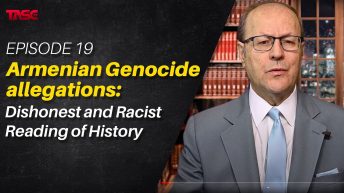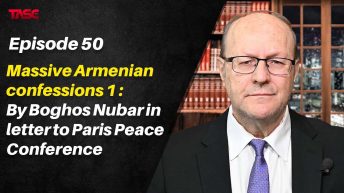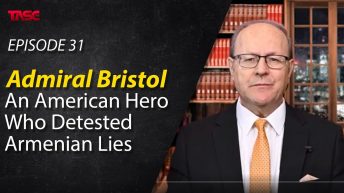r. Heath W. Lowry, in his white paper published in Osmanli Arastirmalari (Ottoman Research), Volume 9, 1988, page 13 set out a hefty goal. By citing examples from scholars who have written on the burning of Izmir (Smyrna) in September 1922 and comparing them with eyewitness testimonies preserved in the U.S. National Archives, he intended to show that those who are deficient in the art of selection of archives may end up producing all the effects of falsehood.
To illustrate the point, he cites the secondary literature on the burning of Izmir, most of which have been written from the perspective of Greeks and Armenians. As his source, Lowry cites the study of Marjorie Housepian’s 1966 book, “The Smyrna Affair.” A Professor of English at New York’s Barnard College and having written without benefit of the scholarly apparatus which normally accompany works of history, Housepian concluded on page 141 that Izmir was burned by the Turkish army to rid Izmir of its Christian inhabitants. In so doing, she follows the approach adopted 40 years earlier by an American Consul, one George Horton, pages 144 to 154 of his 1926 book, “The Blight of Asia”. Horton wrote in pages 153-154 that he believed that Turkish troops burned the city because military representatives of the Great Powers had led the Turks to believe that they would not interfere. To anyone familiar with the Turkish nationalist struggle (1919 – 1923,) the Horton-Housepian school of thought rings hollow.
In September of 1922, the Aegean port city of Izmir, the staging point for the Greek occupation of western Anatolia, was the storehouse of all the items sorely needed by the forces of Mustafa Kemal, such as supplies of food, clothing, medicine, and weapons. Yet, within days of the entry of the Nationalist forces, a massive fire destroyed over three-fourths of the city. The victorious Turkish armies found themselves in possession of a smoldering ruin occupied by several hundred thousand homeless refugees. If one is to accept the Horton-Housepian analysis, we are faced with one of the few incidents in history where a victorious army destroyed the fruits of their victory.
A totally absurd proposition, indeed. Donald Webster, who had served as teacher at the International College in Izmir between 1931-1934, wrote this on page 96 of his 1939 book The Turkey of Ataturk – Social Process In The Turkish Reformation: “All the world heard about the great fire which destroyed much of beautiful Izmir… (T)he preponderance of impartial opinion blames the terror-stricken Armenians, who had bet their money on the wrong horse – a separatist national rather than a cultural individuality within the framework of the new, secular Turkey.” Lord Kinross, on pages 370-371 of his 1965 book “Ataturk: A Biography of Mustafa Kemal, Father of Turkey” and then again in Chapter 40, “The Burning Smyrna”, wrote this : “ The internecine violence led, more or less by accident, to the outbreak of a catastrophic fire. Its origins were never satisfactorily explained. Kemal maintained to Admiral Dumesnil that it had been deliberately planned by an Armenian incendiary organization, and that before the arrival of the Turks speeches had been made in churches, calling for the burning of the city as a sacred duty. Fuel for the purpose had been found in the houses of Armenian women, and several incendiaries had been arrested…
Ismet himself chose to declare that the Greeks had planned to burn the city…” Stanford Shaw, on page 363 of his book he co-wrote with Ezel Kural Shaw wrote this: “ On September 13 a fire broke out in the Armenian quarter of the city. It spread rapidly through gasoline-soaked buildings while the Turkish army’s effort to extinguish it were stymied by the discovery that all the city’s fire hoses had been cut and the fire cisterns emptied. In a single day as many as 25,000 buildings were burnt and half the great city destroyed. Perhaps the last atrocity of the war was the suggestion, quickly taken up by the western press, that the victorious Turkish army was responsible for burning the conquered second city of the old empire.” Houspeian’s use of sources has been extremely selective. In his report, Gresgovich, the Austrian fire chief of Izmir, described how houses exploded and burned all over the Armenian quarter. She completely ignored the testimony of Grescovich.
She also ignored a newspaper report, written by Mark O. Prentiss, an eyewitness to the burning of the city in his capacity as a member of “Constantinople Disaster Relief Committee”, and as a representative of the “Near East Relief” organization. It is a 7 page article titled: “ The Hitherto Untold Story of the Smyrna Fire…Armenians, not Turks, Set the Fire. Evidence of Smyrna Fire Chief Revealed”. (to be continued in the next episode.)SHOW LESS




Add comment